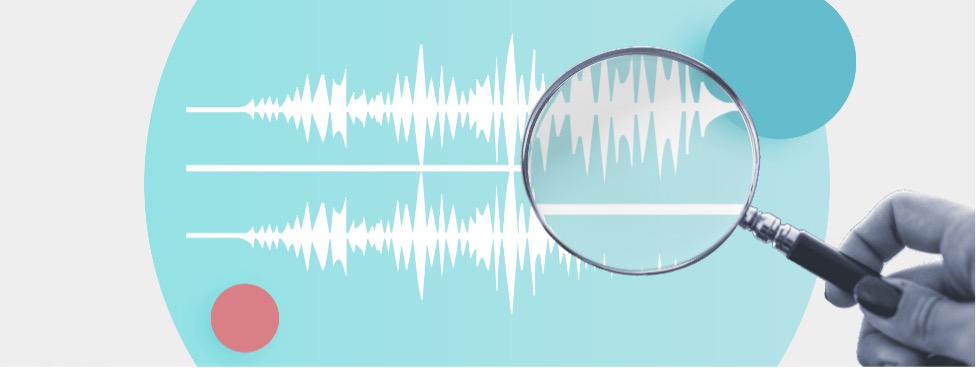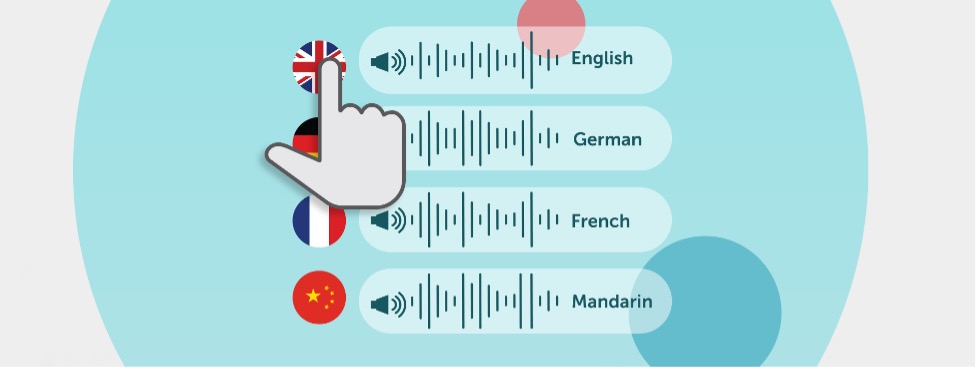
 Alisdair Mans Cornwell, Marketing Specialist || Reading Time: 3 minutes
Alisdair Mans Cornwell, Marketing Specialist || Reading Time: 3 minutes
Imagine being able to almost instantly convert your video content into multiple languages without losing the speaker’s natural tone and emotional delivery.
Well, now you can with AI-powered dubbing technology. And yes, it’s revolutionising how businesses like yours communicate across borders.
Whether you’re scaling corporate training, marketing brand-new products internationally or enhancing customer experiences worldwide, AI dubbing makes multilingual video content more engaging, accessible, scalable, and cost-effective than ever before.
But what exactly is AI dubbing? How does it differ from traditional dubbing? And why should your enterprise use it for video content localisation?
Also referred to as machine dubbing or automatic dubbing, AI dubbing leverages artificial intelligence to seamlessly translate speech from video content into multiple languages while maintaining the original speaker’s natural tone, style and emotions.
Think of it like subtitling, but for speech. It creates expressive, human-like voiceovers that not only replace but also sound just like the original. The result is a far more immersive and engaging experience for global audiences.
By using AI dubbing, your business can break language barriers and deliver authentic, localised video content at scale – without the time, cost, and complexity of traditional dubbing methods.
How exactly does AI dubbing work?
The AI dubbing workflow is incredibly sophisticated. It combines multiple advanced technologies to automate almost the entire dubbing process:
Transcription: The video's original spoken content is converted into text using AI-powered automatic speech recognition (ASR). This step ensures an accurate script that serves as the foundation for translation and dubbing.
Machine Translation: The transcribed text is then translated from the source language (let’s say British English) to the target language (Spanish or French) using advanced Machine Translation technology and the appropriate Termbases & Translation Memories. This ensures accurate and textually appropriate results.
Voice Synthesis: Once the translation is complete, AI generates a natural-sounding but synthesised voice in the target language, mimicking the tone, cadence and emotion of human speech. This is achieved through advanced text-to-speech (TTS) and voice cloning technology.
Audio Synchronisation: AI finally aligns and synchronises the synthesised voice with the original speaker’s lip movements, ensuring a visually seamless and natural viewing experience.
AI is powerful but not perfect. While automation speeds up and scales the dubbing process, human expertise remains critical in the process, especially the post-editing phase.

Expert linguists review and refine translations to guarantee accuracy, cultural relevance and natural phrasing. They fine-tune AI-generated voiceovers, making them sound as expressive and lifelike as possible. This includes ensuring correct pronunciation of company-specific terminology, product names, and industry jargon, so your business’s messaging remains accurate, professional and meets brand guidelines.
And although AI aligns speech with lip movements, linguists make manual adjustments to help achieve flawless timing for a truly seamless viewing experience.
While AI largely automates the video dubbing process, traditional dubbing is a largely human-driven effort. There is very little (if any) automation.
Linguists translate and adapt scripts for cultural relevance. Voice actors bring the dialogue to life with emotion and lip synchronisation. And sound engineers refine recordings to create the final product. The quality is remarkable. There’s no denying it. But the entire process from start to finish is often complex, time-consuming and labour-intensive.
Despite what many believe, traditional dubbing isn’t inferior. It remains the gold standard for industries prioritising high production value and nuanced storytelling. Big-budget films and streaming platforms rely on it because the investment in human voice performances and extensive post-production ensures authenticity and emotional depth.
That said, not all businesses like yours produce blockbuster films. Many operate on tighter budgets and faster timelines, making traditional dubbing impractical.
Costs can quickly escalate, and managing voice actors, studios, and post-production workflows can be a logistical challenge, especially if you need flexibility and speed to scale video content efficiently.
Cost Effective: Automates key steps in the dubbing process and eliminates the costs associated with voice actors and studio time, significantly reducing production costs compared to traditional dubbing methods.
Global Reach: Quickly automates video content localisation into multiple languages, engaging diverse audiences and expanding your reach across global markets.

Speed & Efficiency: Roughly 5-times faster than traditional dubbing methods, enabling rapid delivery of multilingual content to meet tight deadlines and reduce turnaround times.
High-Quality Output: Combines advanced AI technologies with human expertise in the post-editing phase, promising precise, high-quality localised video content.
Scalability: Easily scales with your business goals and video content demands to handle projects of any size or complexity, no matter if it’s a single or multi-video campaign.
Employee Training: Localises training modules, onboarding videos, and compliance courses to ensure effective learning for global teams, no matter their language.
Corporate Communication: Streamlines multilingual internal messaging, webinars, and company updates to keep international employees informed, engaged and included.
Social Media Videos: Reaches a wider audience by dubbing short-form and long-form video social media video content into multiple languages, driving higher engagement and global brand awareness.
Product & Sales Videos: Enhances customer experiences with localised product demos, explainer videos, and marketing content tailored to different markets. Builds trust with international audiences by delivering product information in their native language, improving understanding, engagement and conversion rates.
Marketing Campaigns: Boosts global reach by localising video ads, promotional content and brand storytelling for different markets. Ensures messaging resonates culturally and linguistically, increasing engagement, brand awareness, and conversion rates across international audiences.
AI dubbing is roughly 5-times faster than traditional voiceover methods. In an entirely automated process, it can complete the dubbing process in as little as five to 10 minutes per minute of video. It’s remarkably fast.
When human expertise is added in the post-editing phase, the timeline can extend by up to 3 times. This additional time ensures that even the most complex projects achieve the highest level of precision, accuracy and quality.
But remember: the overall turnaround time ultimately depends on video length, number of languages involved and any specific customisation requirements.
Choosing the right AI dubbing solution is a game-changer for your video content, especially if your business aims to scale and reach a wider global audience.
However, there are many solutions out there and not all of them promise to meet your specific video content localisation demands while maintaining quality, efficiency, accuracy, and security.
Here’s a quick rundown on how to navigate your options to find the solution that best fits your needs:
High-Quality & Cost-Effective
Look for a solution that balances affordability with high-quality voice options, accents, and styles to ensure authentic, region-specific content.
Scalability & Efficiency
Find a solution that’s tailored to the unique, ever-evolving needs of global businesses and enables large-scale, high-volume multilingual content localisation.
Human Linguistic Expertise
AI boosts efficiency, but human linguistic expertise in the post-editing phase ensures accuracy, cultural relevance, and natural delivery. A combination of both promises quick delivery alongside remarkable tone, pronunciation and synchronisation.
End-to-End Service
Choose a provider that manages the entire process—translation, voice selection, synchronisation, quality control and post-editing— from start to finish for a seamless experience that ultimately reduces your internal workload.
Robust Data Security & Privacy
Ensure your provider prioritises ISO-certified data protection and GDPR & CCPA privacy compliance to safeguard your sensitive data.
What is AI dubbing?
AI dubbing is an automated process that translates and synthesises speech in multiple languages while preserving the original speaker’s tone, style, and emotions. It enables businesses to localise video content efficiently without traditional dubbing costs and complexities.
How accurate is AI dubbing?
AI dubbing delivers high accuracy through advanced speech recognition, machine translation, and text-to-speech technologies. However, human expertise is still needed for post-editing to refine translations, pronunciation, and synchronisation.
How does AI dubbing compare to traditional dubbing?
Traditional dubbing relies on human translators, voice actors, and sound engineers, making it time-consuming and expensive. AI dubbing automates most of the process, significantly reducing costs and production time while maintaining quality and consistency.
Can AI dubbing match human voice quality?
Yes, AI dubbing uses advanced voice cloning and neural text-to-speech (TTS) technology to produce natural, expressive voiceovers. Human post-editing can further enhance the quality for a seamless listening experience.
What industries benefit from AI dubbing?
AI dubbing is widely used in e-learning, marketing, corporate communications, retail, travel, and content creation, helping businesses scale multilingual video content efficiently.
Do AI dubbing solutions support multiple languages?
Yes, AI dubbing can localise content in multiple languages simultaneously, making it ideal for businesses looking to expand their global reach quickly.
Related content
Your journey to a powerful, seamless language management experience starts here! Tell us about your needs and we will tailor the perfect solution to your enterprise.